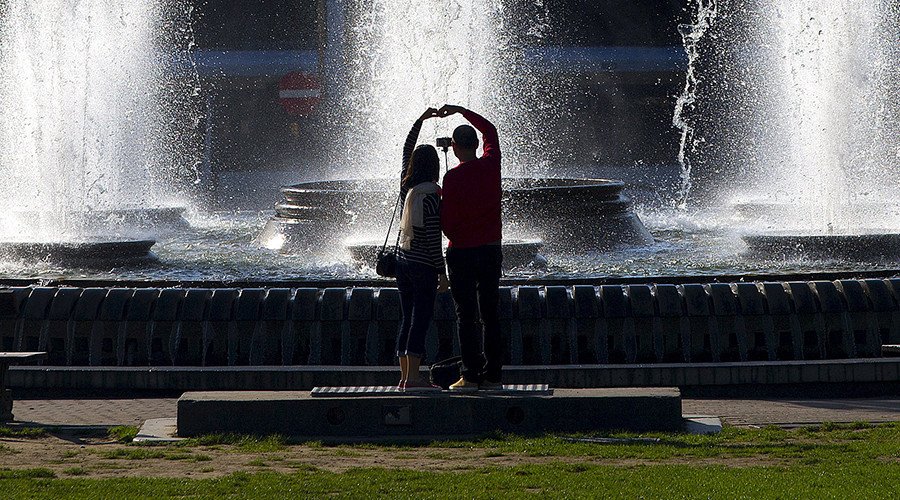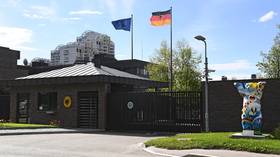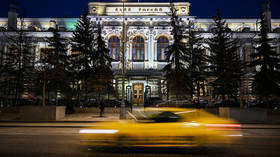Digital narcissism? How selfies killed the art of photography

Digital photography has gone from merely sucking in the world around the owner of the capture device to sucking in the owner as well. Rather than enriching the visual record of our lives, the potential for instant and endless digital capture may now be cheapening it.
I fell in love when I was 15. I was walking down the corridor of our school with some of my friends when She walked by. It was instantaneous: I was smitten. And I pretty much stayed smitten for the next 15 years.
In the end we got married, and happily so – but not to each other.
The only photographic evidence I have to show for all my years of wasted heartache is a Polaroid snap someone took of us at a party. I never met the person who took it, but I assume it was an art student. It was taken at an angle into a broken mirror with Her looking beautiful and unobtainable on one side of the fracture, and me looking lost and a bit blurred on the other.
I now understand that in terms of photography, my formative years were spent around the midway point between the Victorians and Snapchat. The technology existed for someone to sneak a shot of you without you noticing, but not for them to make it immediately accessible to 7 billion people.
The watershed point in this development arc was the advent of digital photography.
Before digital, taking a photograph cost money – I mean above and beyond the cost of the actual camera. You had a set number of potential masterpieces in your camera – usually 20 or 36 – and with every click you were taking a bite of a sandwich you could see getting smaller. As you got down to the last few crumbs you had to make genuine tradeoffs.
And then, of course, something might happen and you would have no sandwich left: if only you hadn’t taken that extra shot of Aunt Jane’s cat you would still have one left for the intergalactic alien spacecraft which had just manifested in the garden.
With traditional photography there was no Control+Z. There was only regret.
And this regret wasn’t free, as I say. You had to pay for it. You had to commit – at least as far as the cost of a single photo – because there was no instant quality control. Then you had to submit an entire block of potential rubbish and pay good money (and wait) before you could see if what you had taken was any good.
In relationship terms, traditional photography was like no sex before marriage: you see something you like, you make a proposal – then a commitment – and only then do you get to go to bed together. It might be great. Or it might not. But you can’t just wander into another bed.
There is something inherently romantic – heroic even – about making hard choices. Romeo and Juliet engage us because they made such choices when it would have been much easier not to. They died as a result, but they chose true love.

Traditional photography was a bit like true love. It required risk. When it worked, a successful photograph was like the sun shining on your picnic. When it didn’t, you were forced into philosophy.
Digital photography is nothing like true love. It’s more like spamming hot chicks on a dating site under multiple profiles. If you don’t like something, you can delete it or ignore it. Or just change your filter settings.
With Polaroid, you had to win your bride by slaying dragons first, with digital you are living in a whorehouse you also happen to own.
But because your sandwich is limitless, it is impossible to be full.
With the advent of the smartphone with decent optical capabilities, the object of one’s love has shifted from another to oneself and entered the culture as the selfie.
But this fetish for self isn’t shameful. It is accepted, celebrated and competed over. It has become a spectator sport – one in which the spectators are also the players.
Of course, not everyone is hardcore. You don’t have to be hanging off the Eiffel Tower playing the harmonica or Sumo-wrestling a llama to enter the selfie pantheon. These are extreme selfies and people can – and tragically do – lose their lives trying to take.
READ MORE: 21yo woman dies in fall from Moscow bridge while taking selfie
But most people you see taking selfies are in boring, or at least not exceptional, locations: in cafes, in the park, buying clothes, having breakfast.
I’m uneasy when I am around people taking them – I don’t mean taking them of me, just somewhere near me. I’m not sure if I should look away and pretend it isn’t happening.
It’s not like someone in front of you using the cashpoint machine. There, it’s clear: you should keep a respectful distance and not look.
But with selfies, it’s different. It’s more like when you see people picking their noses behind the wheel of their cars when you are in slow-moving traffic. People feel safe in their cars. A car has a comfy seat and a screen. It’s so much like most people’s sitting-room they feel they are inviolate and invisible and therefore they can do what they like.
But they are not. I can see them.
Like with the selfie, there I feel there ought to be some embarrassment. But it seems to have got lost.
The selfie seems to have picked up where graffiti left off, on the one hand meeting a dog-like need to mark territory, and combining it with a vain, hopeless shot at significance on the other.
Through the multi-person selfie we become electronic blood-brothers. We possess a little piece of other’s souls in our pockets which we can choose to push out into the electronic universe. Since we’ve got that over each other we might as well complete the union and become “friends.” Unless, of course, I have already have reached my limit, in which case you’ll just have to “follow” me.
In parallel with the selfie – but not directly caused by it – we have seen the emergence of photo-bombing. In the age of ubiquitous photography, the photo-bomb is the equivalent of an IED.
Here, some idiot spontaneously jumps into the background of your shot and ruins it. Now what was potentially going to show how cool, cosy and wacky you all are makes you look like complete idiots, and you run the risk of becoming a three-day meme and being mocked by several hundred million people who will never appreciate how unfair the whole thing was.
Vanilla selfies were bad enough, but a range of add-ons and prosthetics has emerged to make the creation of your very own creepy data-collating reality show easier, and it serves to put a more flattering distance between the capture device and the owner’s core subject.
Given its inherently promiscuous, debauching nature, it is perhaps not surprising that digital photography has gone from indiscriminately sucking in the world surrounding the owner of the capture device, to sucking in the owner himself.
I don’t know where this is going, but I’m sure it will be ghastly.

My money is on personal drones. I expect you will soon connect your phone via Bluetooth to a small helicopter-like thing which will buzz around the restaurant taking wide-angle shots in high definition and uploading the result simultaneously to multiple social media platforms while automatically face-tagging everyone in the room. A server-side application will then work out if the couples at the corner tables are married to each other and – if not – what the projected blackmail revenue is likely to be across a range of scenarios. The list of the most likely candidates for shakedown will come to your phone by SMS and you will be able to smile smugly at your future victims as you ask for the check, safe if the knowledge that it is they who will be paying for your dinner.
Half the people I meet tell me their hobbies include photography. Almost none of them are photographers – unless what they mean by “photographer” is someone who takes thousands of random and useless shots, a very few of which happen to look OK.
To me, this obsessive snapping of everything isn’t photography. It is mere visual capture; event-logging, and rarely more than that.
No, we are not photographers. We are editors at best. As we swipe through the results, if our eyelashes are out of proportion with our elbows, the results of these mostly random clicks are expunged.
Yes, it is efficient. But it is also empty, crass and soulless.
Had the technology we use today been current when I was 15, the visual record of my first love would extend far beyond the one dog-eared Polaroid photograph I keep in a box in the cupboard. I would be tripping over photos of that stage in my life on the Facebook pages of friends of friends attached to comments and “likes” and “dislikes” from people neither she nor I have ever heard of.
That one photograph I keep to remember would be replaced by a library of annotated evidence – one which would never let me forget.
Happily, the technical advances in photography are now beginning to work against it. As with music where there is a resurgence of appreciation of vinyl, there is a growing sense that digital images are flat and lacking in range and texture. This is partly because the pixel – no matter how small – is square.
But it is also because the easy, cost-free nature of both capture and production have made photography feel cheap.
Which it is.
The statements, views and opinions expressed in this column are solely those of the author and do not necessarily represent those of RT.













